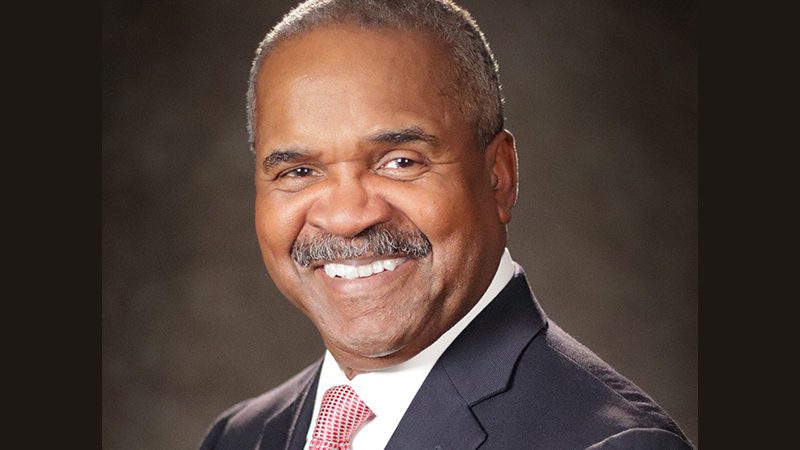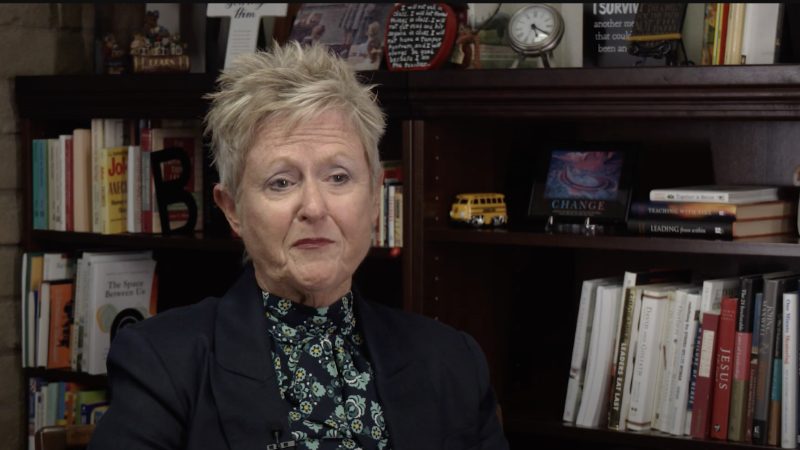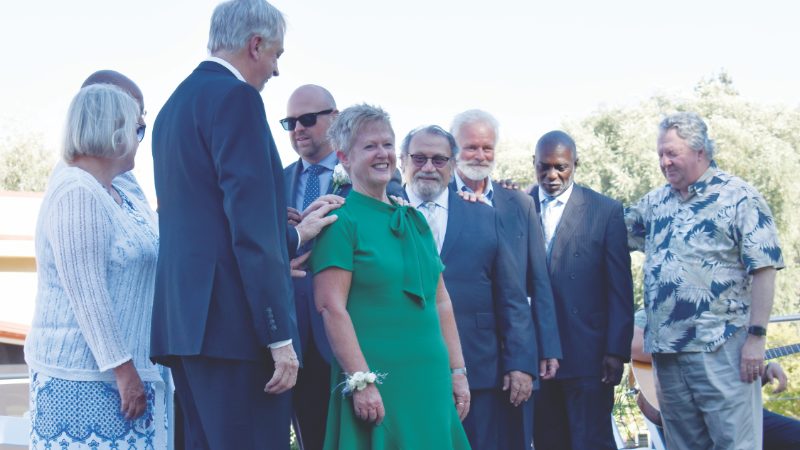By the Recorder editorial staff
Tough beginnings

In 1889 a group of literature evangelists was sent by the California Conference to Utah, though they found “the outlook was not at all flattering.”
At the General Conference session in March 1891, it was reported that G.H. Derrick was sent to Utah, noting that this was “perhaps the hardest field for labor in the United States.” It was also recommended that the work should be started “after a study of the people and the best means of reaching them.”
The GC minutes also included the following telling observation by R.A. Underwood: “The Congregationalists have expended more than $250,000 without accomplishing hardly anything in Utah. The Methodists and others have tried the work with a similar experience, it being almost impossible to reach the people by means of preaching or teaching.”1
So it is surprising in those circumstances that the first Adventist church was organized in Salt Lake City with 20 members the following year. Perhaps due to the challenges, the work in Utah was assigned to direct General Conference supervision in 1894. The first camp meeting held in Utah was in 1896.
In 1902 the Pacific Union Conference recommended the organization of the Utah Conference, with a regular membership of 143 plus some isolated members. There were two ordained ministers and churches in Salt Lake City, Ogden, Provo, and Logan.
Ellen White stops over
In 1883, on one of her journeys across the continent, Ellen White’s train stopped at Ogden. She and her party were taken on a tour of Salt Lake City and the Mormon Tabernacle, as well as the new temple under construction.
She commented, “We were gratified that we had this privilege of visiting the city of the Mormons; but we saw nothing very attractive in this place, and had no desire to make it our home.”2
In 1905, Ellen White stopped again briefly at Salt Lake City. She noted:
At Salt Lake we were met by several of our brethren, who urged us to remain with them for a few days. By a hard struggle the church in Salt Lake City has built a good meeting-house. In a prominent part of the city our brethren are conducting a vegetarian cafe and a health food store; and all felt the need of counsel as to how to conduct the work in Utah.
This invitation we were obliged to refuse. We had cut short our work in Battle Creek because of the sickness of Sister Marian Davis, and had to hasten home as quickly as possible on her account. Our visit with the brethren at Salt Lake was a short one, but it was cheering to hear of the progress of our work in this citadel of Mormonism.3
In 1909 Ellen White stopped in Salt Lake City on her way home to California. She preached about living for Christ daily and spoke of the education of children. Her last words to the large congregation were:
My brethren and sisters, let us study the simplicity there is in the Word of God. Let us see what we can do to advance the cause of Christ in the earth. Christ was in this world as a man of sorrows and acquainted with grief. There were many who set themselves against his work. There will be those who will oppose you. But your work is to preach Christ and him crucified; and when you do this, the salvation of God will be revealed in the conversion of souls.
Since I left my home in California in April, I have visited many places, and have spoken to thousands of people. This is the last stop I expect to make before reaching my home again. I would leave these words with you: Carry forward the work in faith and humble dependence upon God. Let each believer have light in himself; then the blessing of God will rest upon you, and you will see the salvation of God in the advancement of his work in this field.4
These were very nearly Ellen White’s last words ever. On the train over the Sierra Nevada mountains it seems that she experienced heart failure due to the high altitude. Hardly any pulse could be detected. She was treated with hot water and peppermint and warmed up with hot water bottles. As the train descended to lower altitudes her condition improved, but it was a close call.

Utah a mission field
In 1901 it was reported that “Utah is a General Conference mission field. It contains three churches, with a membership of 161, one unorganized company of ten members, and fifteen isolated Sabbath-keepers, 186 in all, a gain of seventy-one for the past two years. The working force consists of two ordained ministers, one licentiate, and two missionary licentiates. $2,338.10 in tithe has been raised toward supporting their own work.”5
It seems the brethren did not quite know where to put Utah in the geographical administration of the church. Initially it was a separate conference within the Pacific Union, but then in 1916 the Inter-Mountain Conference was formed, made up of the former Utah and Western Colorado Conferences. It stayed part of the Pacific Union Conference until 1919, when Utah (or at least parts of it) became a Mission under the Central Union Conference. Eventually the Nevada-Utah Conference was organized in 1931, and it became part of the Pacific Union Conference once again.
_____________________________
1 General Conference Daily Bulletin, vol. 4 (March 8, 1891), p. 25.
2 Ellen G. White, “Notes of Travel,” Review and Herald (Jan. 29, 1884), p. 66.
3 Ellen G. White, “Notes of Travel—No. 3,” Review and Herald (Feb. 16, 1905), p. 8.
4 Reported by W.C. White, “From Colorado to California,” Review and Herald (Jan. 20, 1910), p. 7.
5 General Conference Bulletin, vol. 4 (April 4, 1901), p. 54.
Pioneros adventistas en el oeste Inicios: Utah
Por el personal editorial del Recorder
Comienzos difíciles

En 1889, la California Conference envió a Utah a un grupo de colportores, que encontraron que «el panorama no era nada halagador».
En la sesión de la Conferencia General en marzo de 1891, se informó que G. H. Derrick fue enviado a Utah, señalando que ese era «quizás el campo más difícil para la obra en los Estados Unidos». También se recomendó que la obra se iniciase «después de un estudio de la gente y de la mejor manera de llevarles el mensaje».
Las actas de la CG también incluyeron la siguiente observación reveladora de R. A. Underwood: «Los congregacionalistas han gastado más de $250,000 sin lograr casi nada en Utah. Los metodistas y otros han intentado trabajar ahí con una experiencia similar, siendo casi imposible alcanzar a la gente por medio de la predicación o la enseñanza».1
Por lo tanto es sorprendente, en esas circunstancias, que la primera iglesia adventista se organizase en Salt Lake City con 20 miembros al año siguiente. Tal vez debido a los desafíos, la obra en Utah fue asignada a la supervisión directa de la Conferencia General en 1894. El primer campestre que se llevó a cabo en Utah fue en 1896.
En 1902 la Pacific Union Conference recomendó la organización de la Utah Conference, con una membresía regular de 143 más algunos miembros aislados. Había dos ministros ordenados e iglesias en Salt Lake City, Ogden, Provo y Logan.
Visita de Ellen White
En 1883, en uno de sus viajes a través del continente, el tren en el que viajaba Ellen White se detuvo en Ogden. Ella y su grupo fueron llevados a un recorrido por Salt Lake City y el Tabernáculo Mormón, así como al nuevo templo en construcción.
Ella comentó: «Nos sentimos gratificados de haber tenido ese privilegio de visitar la ciudad de los mormones; pero no vimos nada muy atractivo en ese lugar, y no teníamos ningún deseo de convertirlo en nuestro hogar».2
En 1905, Ellen White se detuvo de nuevo brevemente en Salt Lake City. Señaló:
En Salt Lake fuimos recibidos por varios de nuestros hermanos, quienes nos instaron a quedarnos con ellos por unos días. A través de una dura lucha, la iglesia de Salt Lake City ha construido un buen centro de reuniones. En una parte prominente de la ciudad, nuestros hermanos han instalado un café vegetariano y una tienda de alimentos saludables; y todos sintieron la necesidad de consejo en cuanto a cómo conducir la obra en Utah.
Nos vimos obligados a rechazar esa invitación. Habíamos interrumpido nuestro trabajo en Battle Creek debido a la enfermedad de la hermana Marian Davis, y tuvimos que apresurarnos a regresar a casa lo más rápido posible. Nuestra visita con los hermanos en Salt Lake [City] fue corta, pero fue alentador escuchar el progreso de nuestra obra en esa ciudadela del mormonismo.3
En 1909, Ellen White se detuvo en Salt Lake City en su camino de regreso a California. Predicó sobre vivir para Cristo todos los días y habló de la educación de los niños. Sus últimas palabras a la numerosa congregación fueron:
Mis hermanos y hermanas, estudiemos la sencillez que hay en la Palabra de Dios. Veamos lo que podemos hacer para avanzar la causa de Cristo en la tierra. Cristo estuvo en este mundo como varón de dolores y experimentado en quebrantos. Hubo muchos que se opusieron a su obra. Habrá quienes se opongan a su obra. Pero su trabajo es predicar a Cristo y a éste crucificado; y cuando lo hagan, la salvación de Dios se revelará en la conversión de las almas.
Desde que salí de mi casa en California en abril, he visitado muchos lugares y he hablado con miles de personas. Esta es la última parada que espero hacer antes de regresar a casa. Quisiera dejarles estas palabras: Continúen la obra con fe y humilde dependencia en Dios. Que cada creyente tenga luz en sí mismo; entonces la bendición de Dios descansará sobre si, y verá la salvación de Dios en el avance de su obra en este campo.4
Esas fueron casi las últimas palabras de Ellen White. En el tren sobre las montañas de la Sierra Nevada parece que experimentó una insuficiencia cardíaca debido a la gran altitud. Apenas se le pudo detectar el pulso. La trataron con agua caliente y menta y la calentaron con bolsas de agua. A medida que el tren descendía a altitudes más bajas, su condición mejoró, pero estuvo cerca de perecer.

Utah, un campo misionero
En 1901 se informó que «Utah es un campo misionero de la Conferencia General. Cuenta con tres iglesias y una membresía de 161, una compañía no organizada de diez miembros, y quince observadores aislados del sábado, 186 en total, un aumento de setenta y uno durante los últimos dos años. El grupo de labor consiste en dos ministros ordenados, uno licenciado y dos misioneros licenciados. Se han recaudado $2,338.10 en diezmos para apoyar su propia labor».5
Parece que los hermanos no sabían muy bien dónde colocar a Utah en la administración geográfica de la iglesia. Inicialmente era una conferencia separada dentro de la Pacific Union, pero más tarde, en 1916, se formó la Inter-Mountain Conference, compuesta por las antiguas conferencias de Utah y Colorado Occidental. Siguió siendo parte de la Pacific Union Conference hasta 1919, cuando Utah (o al menos partes de ella) se convirtió en una misión bajo la Central Union Conference. Finalmente, la Nevada-Utah Conference se organizó en 1931, y volvió a formar parte de la Pacific Union Conference.
_____________________________
1 General Conference Daily Bulletin, vol. 4 (March 8, 1891), p. 25.
2 Ellen G. White, “Notes of Travel,” Review and Herald (Jan. 29, 1884), p. 66.
3 Ellen G. White, “Notes of Travel—No. 3,” Review and Herald (Feb. 16, 1905), p. 8.
4 Reported by W.C. White, “From Colorado to California,” Review and Herald (Jan. 20, 1910), p. 7.
5 General Conference Bulletin, vol. 4 (April 4, 1901), p. 54.






